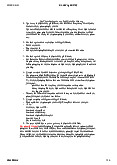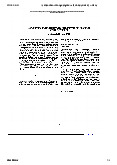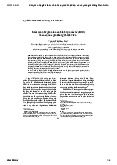



Preview text:
17:38 31/7/24 Reading strategies Reading Strategies
Reading effectively is a complex process that starts before you encounter a text. To succeed it is
necessary to be disciplined in the implementation of this process, which is made up five parts:
predicting, surveying, skimming, and scanning, monitoring. It is essential that you realize that you
have control over this process, adapting it to your needs.
Note on vocabulary: It is not important to understand every word. Take note of words that you do not
understand, and come back later if you need to.
1. Predicting (http://www.teachervision...) What Is It?
Effective readers use pictures, titles, headings, and text—as well as personal experiences—to make
predictions before they begin to read. Predicting involves thinking ahead while reading and
anticipating information and events in the text. After making predictions, students can read through
the text and refine, revise, and verify their predictions.
The strategy of making predictions actively engages students and connects them to the text by asking
them what they think might occur in the story. Using the text, students refine, revise, and verify their thinking and predictions.
Why Is It Important?
Making predictions activates students' prior knowledge about the text and helps them make
connections between new information and what they already know. By making predictions about the
text before, during, and after reading, students use what they already know—as well as what they
suppose might happen—to make connections to the text.
Snow (1998) has found that throughout the early grades, reading curricula should include explicit
instruction on strategies used to comprehend text either read to the students or that students read
themselves. These strategies include summarizing the main idea, predicting events or information to
which the text is leading, drawing inferences, and monitoring for misunderstandings.
Process of prediction: (www.literacyworkshop.org)
When predicting with fiction, students
preview the front and back covers, illustrations, and headings before reading;
predict what is likely to happen next based on clues from the text or illustrations;
use what they know (from text and prior knowledge);
stop to predict during reading; and
continue to make logical predictions based on clues from the text. about:blank 1/4 17:38 31/7/24 Reading strategies
When predicting with nonfiction, students
preview the front and back covers, illustrations, and headings before reading;
predict what is likely to be learned based on clues from the text or illustrations;
apply what they know to help make a prediction;
stop to predict during reading; and
continue to make logical predictions based on clues from the text.
When using metacognition with either fiction or nonfiction, students tell how predicting helps them to understand the text.
The language of prediction that students use (Mowery, 1995) may include the following phrases: I think...because... I’ll bet...because... I wonder if...because... I imagine...because... I suppose...because... I predict...because...
http://www.isu.edu/ctl/cls/handouts/ReadingStrategies/surveySkimScan.pdf
2. SURVEYING (http://www.isu.edu)
Purpose - to get broad, overall picture of essentials in articles, chapters, or books. How do you do it? 1. read title,
2. read all headings, italicized oords, graphs and tables
3. read read first and last paragraph s and/or 4. read summary How will surveying help me?
I. facilitates reading - increases subsequent reading speed 2. improves comprehension
3. gives you ideas about whether to skip material, skim, read, study - helps you to be selective 3. SKIMMING
Purpose - concentrates your attention on the essentials of a paragraph or series of paragraphs How do you do it? -
read first and last sentences of paragraph, and important words in between. about:blank 2/4 17:38 31/7/24 Reading strategies Two skimming patterns:
1. for formal style typical of most text books (with long involved sentences and long paragraphs read using 3 steps outlined above)
2. for informal style (shorter sentences and paragraphs) read using first two steps only How will skimming help me?
1. after surveying article, you may feel it doesn't merit reading, but is too important to discard
2. use to review material (previously studied) just before a test
3. will help you get through material faster 4. SCANNING
Purpose - to help you find specific information within a relatively large body of information How do you do it?
I. visualize things to be found - get clear mental picture of the words
2. use all available clues -capital letters, hyphens, italics, synonyms, key words
3. use paragraph topical clues, such as words in boldface or italics
4. use systematic scanning patterns
a) run eyes rapidly down middle of column using a zig-zag motion
b) use wider side-by-side movement for solid pages of print How can scanning help me?
I. uncovers relevant information
2. accelerates reading speed and flexibility (can scan ten times your present reading rate)
3. two situations where scanning is helpful:
a) you know material has information you want, but can't remember specifically what it is or where it is in the chapter
b) you are looking for something unknown - you won't know exactly until you find it (i.e., processing
large amounts of information as part of your job) about:blank 3/4 17:38 31/7/24 Reading strategies
5. Monitoring Comprehension (www.indiana.edu...)
Strategic readers check up on their comprehension of the text (and the extent to which they are
achieving their purpose for reading) constantly while reading. We are constantly monitoring our
success. When we recognize that we're having trouble understanding what we're reading, or that we're
not achieving our purpose for reading, we take action to try to remedy the situation. We might reread
part of the text, try to form a mental image of what we're reading, or draw a chart or a graph to help us
sort out the information in the text. (Rereading, visualizing, and making charts and graphs are all
examples of metacognitive/cognitive strategies.
IN YOUR HEAD" VS. "ON PAPER" STRATEGIES
There are two broad categories of strategies: "in your head" strategies and "on paper"
strategies. "In your head" strategies can be either cognitive or metacognitive, depending on
whether or not the reader is aware that he or she is using them. "On paper" strategies, on the
other hand are always referred to as metacognitive strategies (as opposed to cognitive
strategies), because when we take out a pen or pencil in order to engage in a strategy, we are
always aware of our strategy use.
Examples of "In Your Head" Strategies
Examples of "On Paper" Strategies Visualizing Taking notes Making predictions Using a highlighter Generating questions Drawing graphs
Identifying main ideas and details Drawing pictures Recognizing sequence Underlining ideas in the text Using background knowledge
Brainstorming ideas about the text Comparing and contrasting Making diagrams Identifying cause and effect Summarizing Drawing conclusions
Relating to personal experiences Skimming and scanning Rereading Mediography :
http://www.teachervision.fen.com/skill-builder/reading/48711.html (retrieved Jan. 11, 2009)
www.literacyworkshop.org/download.php?fileName=Predicting.rtf (retrieved Jan. 11, 2009)
http://www.isu.edu/ctl/cls/handouts/ReadingStrategies/surveySkimScan.pdf (retrieved Jan. 11, 2009)
http://www.indiana.edu/~l517/monitoring.html#Strategies%20That%20Include%20Comprehension %20Monitoring%20Activities about:blank 4/4




